Track leads from SEO in Ninja Forms
Learn how you can use Attributer + Ninja Forms to track the number of leads coming from your SEO efforts.

Are you struggling to track how many leads & customers you get from your SEO efforts?
While tools like Google Analytics can show you how many visitors landed on your site through organic search, they don’t make it clear how many of those visitors turned into leads and customers.
Don't stress, there is a solution.
In this article, you'll learn how to use a tool called Attributer to capture organic search data with each submission of your Ninja Forms. Plus, we'll take a look at a few example reports you can run that will show you exactly how many leads you’re getting from SEO.
4 steps to track leads & customers from SEO in Ninja Forms
Tracking how many leads you get from SEO is easy when you use Attributer with Ninja Forms. Let's walk you through how it works:
1. Install Attributer on your website

First things first, you need to sign up to Attributer, starting with our 14-day free trial.
You'll receive a snippet of code that, depending on what website builder you use, you should be able to add to your site via the Settings section. If you're stuck, you can also add it using tools like Google Tag Manager.
Need a helping hand? Check out our instructions for adding the code using the most popular website builders (WordPress, Wix, Webflow, Squarespace, etc) here.
2. Add hidden fields to your forms
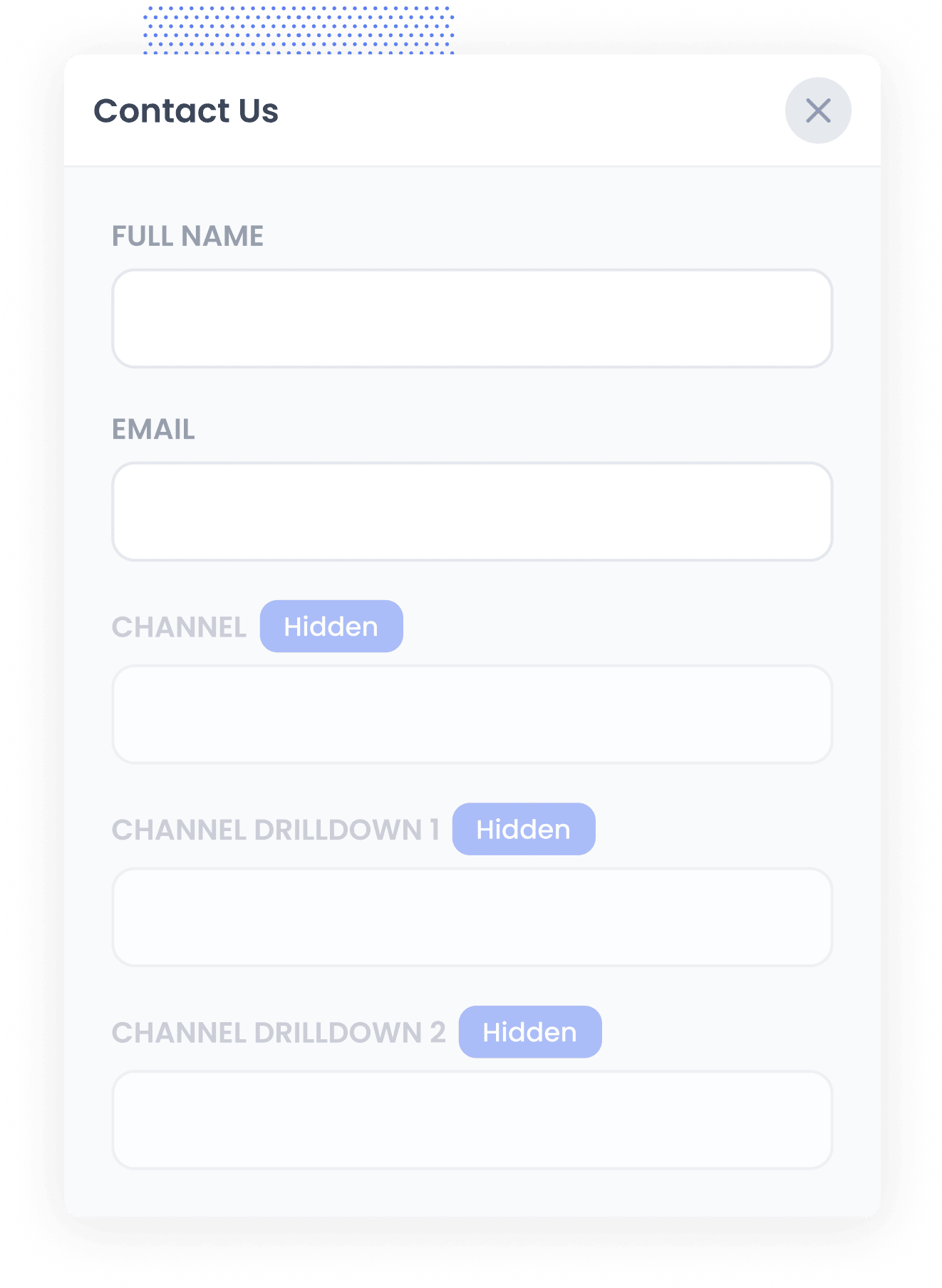
Once you've installed the code on your website, you cthen need to add a series of hidden fields to the lead capture forms on your website. Those hidden fields are:
- Channel
- Channel Drilldown 1
- Channel Drilldown 2
- Channel Drilldown 3
- Landing Page
- Landing Page Group
The good news is that Ninja Forms makes this easy. Simply drag and drop six hidden fields into your form and configure each with specific default values. You can see step-by-step instructions here.
3. Attributer writes SEO data into the hidden fields
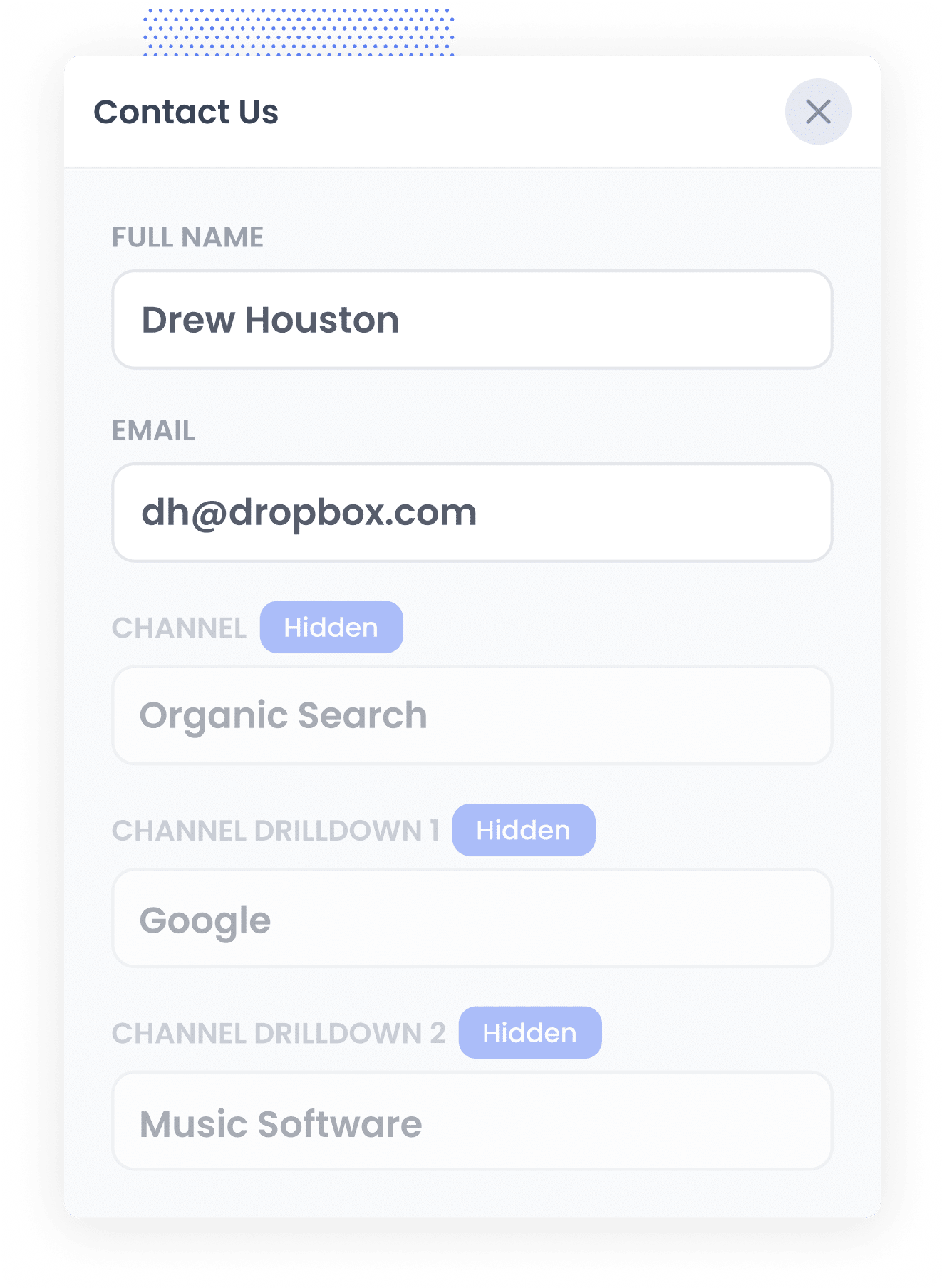
When someone visits your website, Attributer looks at different data points to determine where they came from (similar to what Google Analytics looks at).
It then classifies them into specific channels, such as Organic Search, Paid Search, Paid Social, etc. This information is stored in their browser.
4. SEO data is captured with each lead
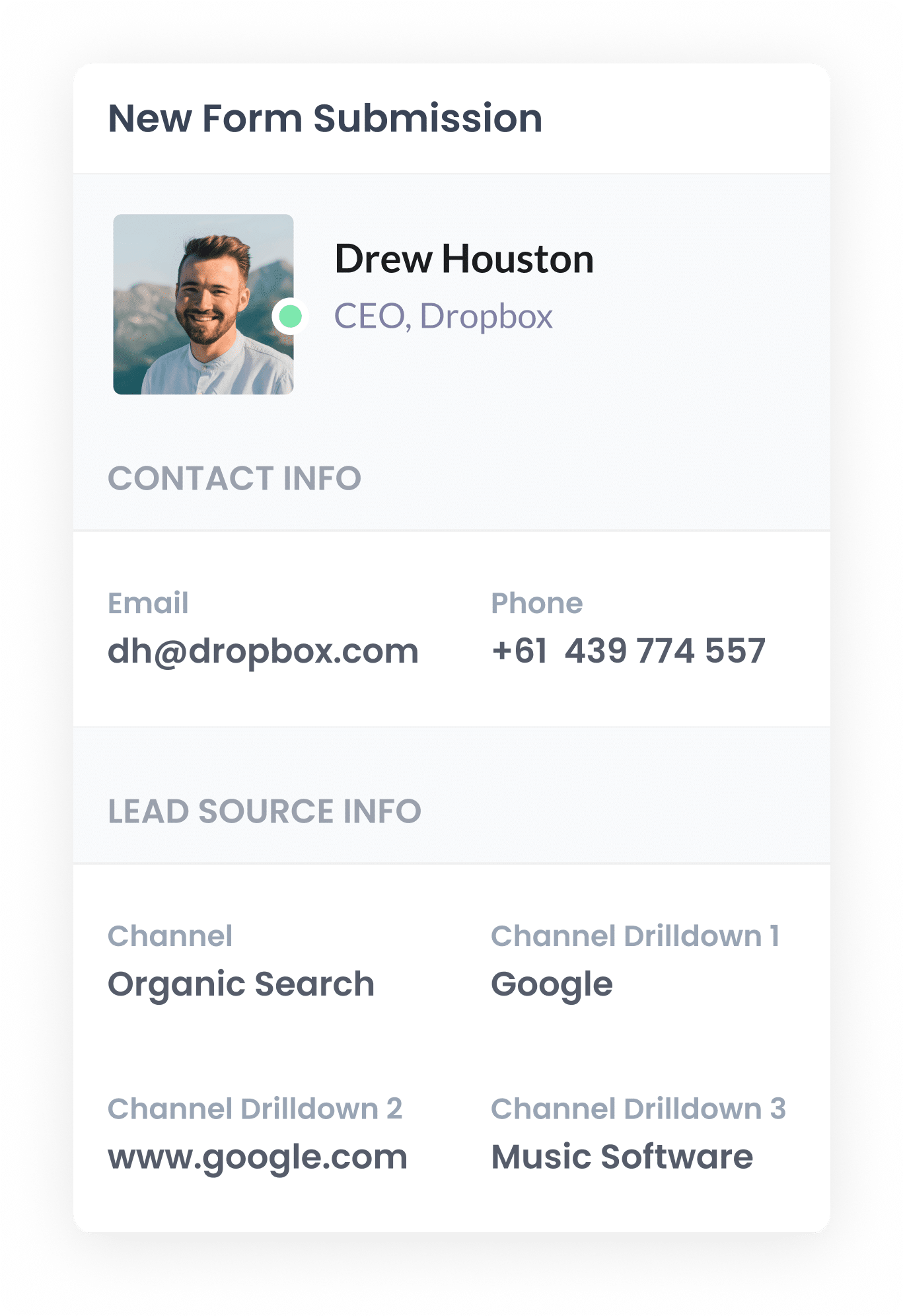
When a visitor submits a form on your website, Ninja Forms captures the organic search data that Attributer wrote in the hidden fields, along with the lead’s name, email, and other details.
This information can then be seen in the Submissions section of Ninja Forms, included in email notifications, sent to your CRM, and used in various other ways.
What data gets captured
Attributer provides two key types of data about your leads: how they arrived at your site (channel) and which content attracted them (landing page).
For instance, if you were part of the marketing team at a construction company and a potential client found your site through an organic Google search, the following data would be captured:
- Channel = Paid Search
- Channel Drilldown 1 = Google
- Channel Drilldown 2 = www.google.com (or the domain they came from, like google.com.au or google.co.uk)
- Channel Drilldown 3: commercial construction companies Brisbane (or the keyword they searched for, when it’s available)
On top of this, you would also receive insights into the specific page they landed on. It might look a bit like this:
- Landing Page = acmeconstruction.com.au/projects/high-rise-developments
- Landing Page Group = /projects
This landing page data helps you identify which content on your site is attracting leads from organic search, allowing you to focus on creating more of what works.
What you can do with the data
Once Ninja Forms captures the organic search data, you can leverage it in different ways:
- View it in your dashboard – The organic search data appears alongside each form submission on the ‘Submissions’ page in the Ninja Forms section of your WordPress dashboard.
- Include it in email notifications – You can add the organic search data to lead notification emails sent by Ninja Forms, allowing you to see the source of each lead directly in your inbox.
- Integrate with your CRM – You can send the SEO data to platforms like Salesforce, HubSpot, or Pipedrive. With this data in your CRM, you can track how many leads came from organic search, how many customers you got, how much revenue, and more.
- Export to a spreadsheet – You can use Ninja Forms’ Google Sheets integration to export the data to a spreadsheet, where you can use it to create basic charts and graphs to analyse how many leads you're getting from organic search. You can also connect tools like Google Data Studio to build more advanced reports and dashboards.
3 example reports you can run when you capture organic search data in Ninja Forms
Throughout my 15-year career in marketing, I've dedication thousands of hours to SEO and created hundreds of reports to measure how effective our strategies are.
Below, I'm sharing three reports that have been the most valuable over the years.
1. Leads by Channel
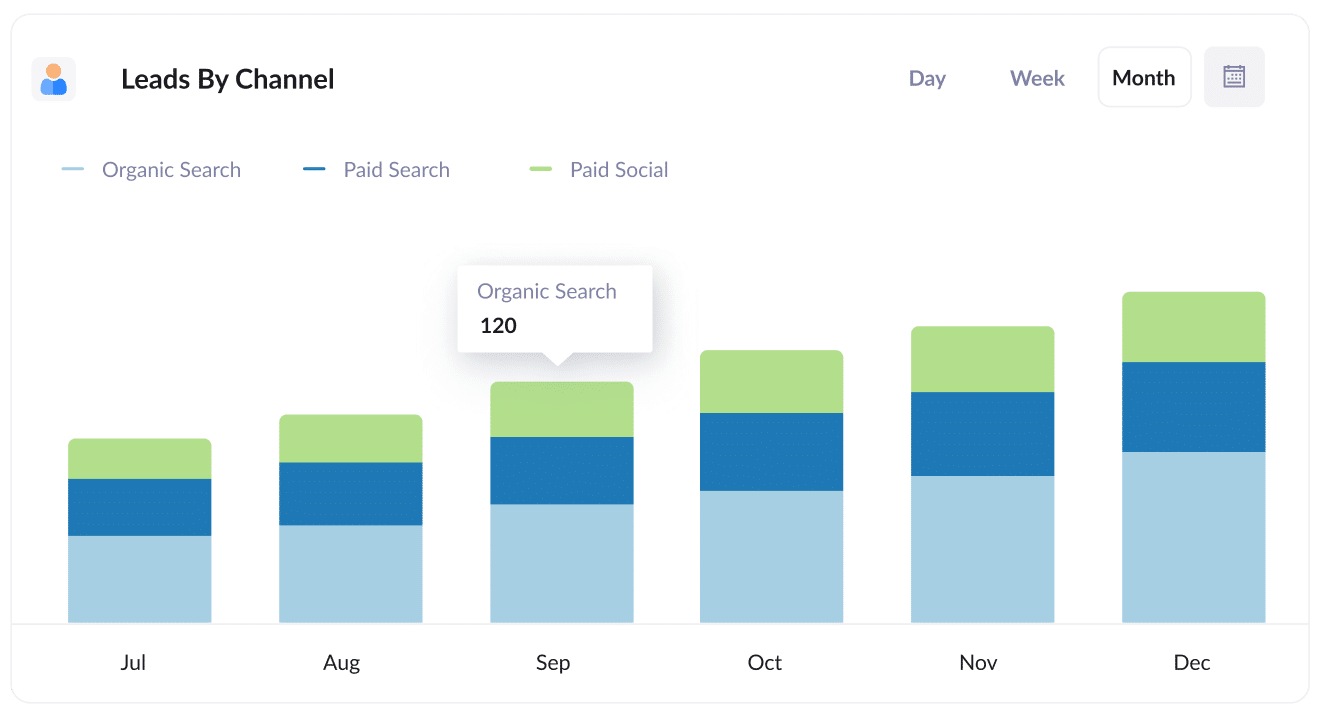
This report tracks the number of leads you generate each month, categorised by their channel (such as Organic Search, Paid Search, or Paid Social).
It provides a high-level snapshot of your SEO performance, helping you assess whether your efforts are translating into more leads for your business.
It’s also useful for comparing SEO with other channels. For example, if Organic Search is driving more leads than Paid Search, but most of your budget is allocated to paid ads, you might consider shifting more resources to SEO to grow your business.
2. Leads from Organic Search by Landing Page Group
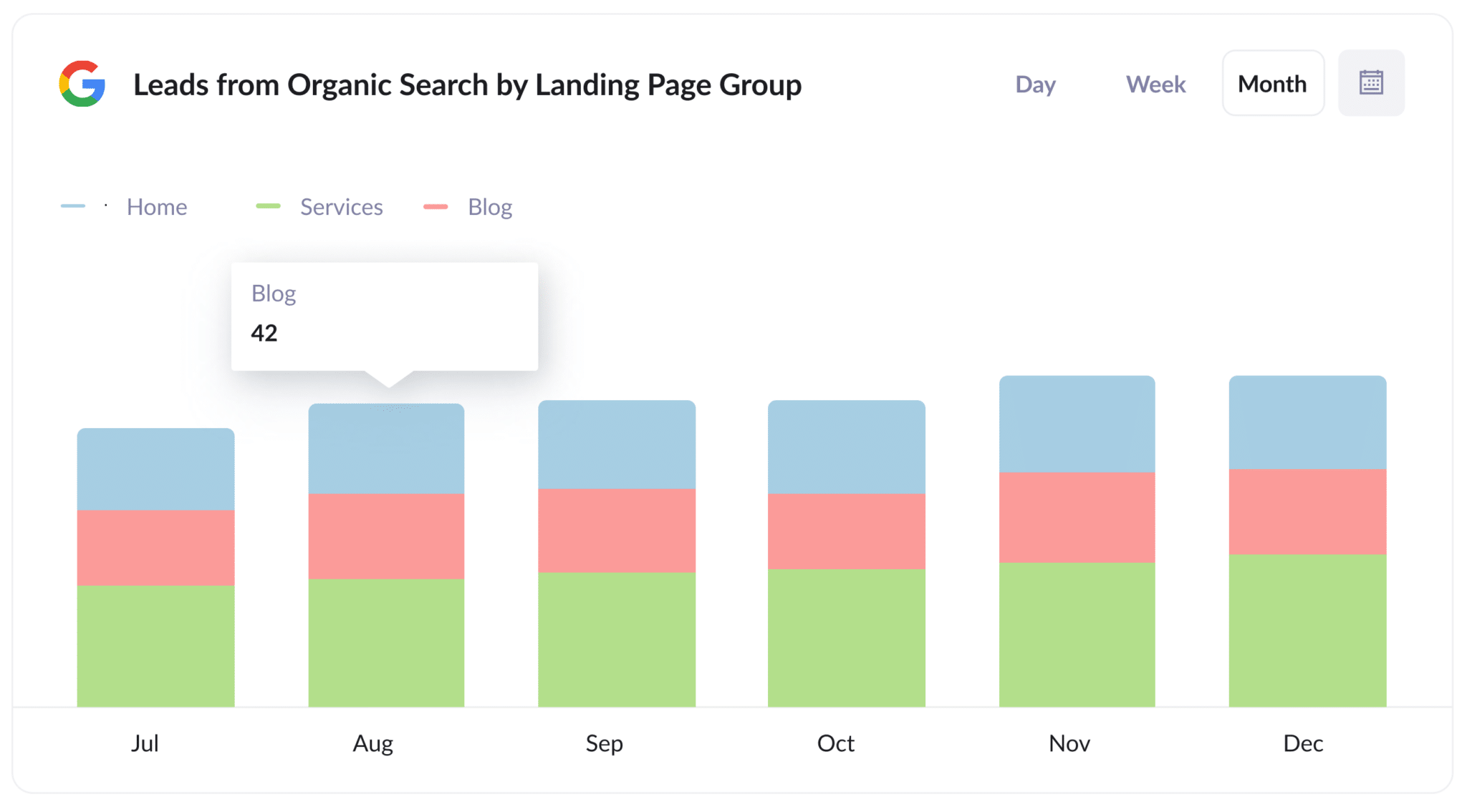
This report tracks the number of new leads from organic search each month, categorised by landing page group, such as Home, Blog, Services, etc.
It helps identify which types of content are driving the most leads, providing valuable insights to refine your content and SEO strategy.
3. Leads from Organic Search by Landing Page
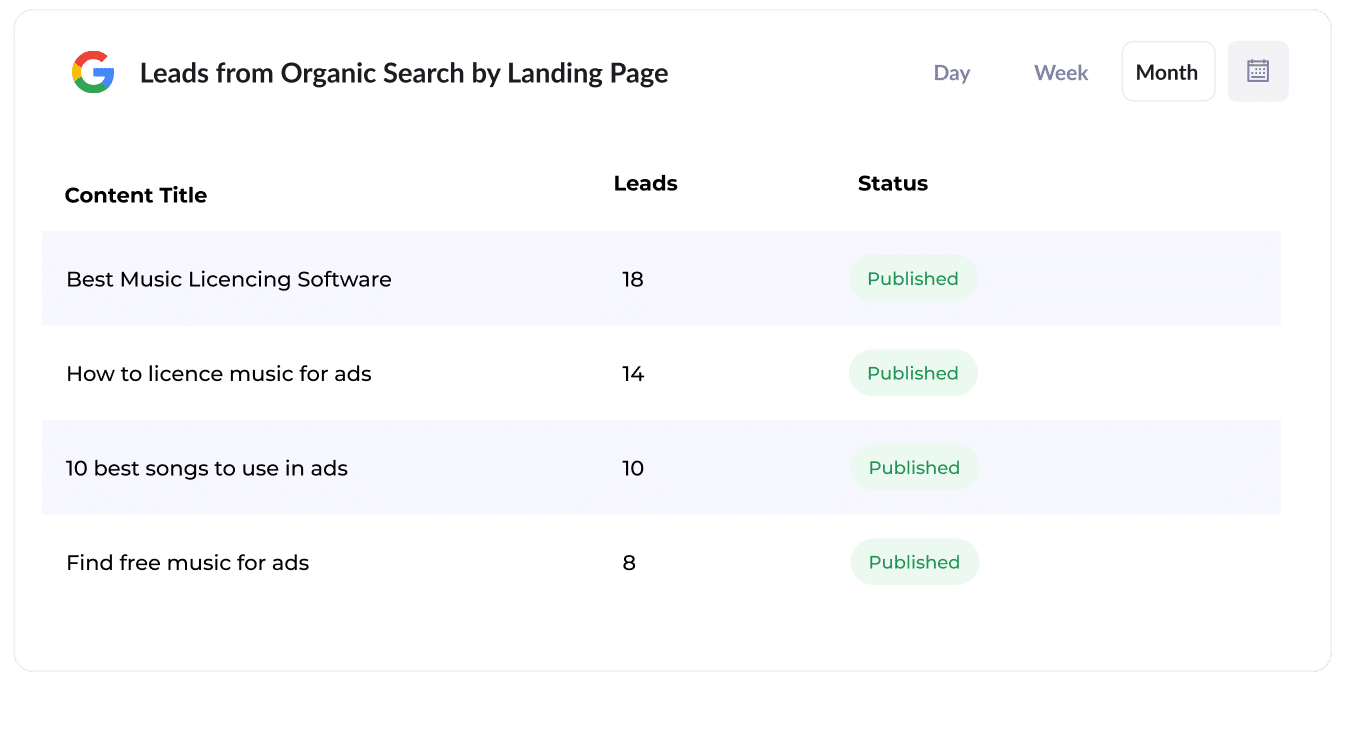
This report tracks the number of new leads generated by each individual piece of content on your site, such as blog posts.
It provides a clear view of which content is performing best, helping you make data-driven decisions on what to produce more of.
How Attributer helped Flare HR 4x the number of leads they got from SEO
Flare HR, a Sydney-based company with more than 100 employees, provides HR management software to thousands of businesses.
As part of their offering, Flare HR gives customers a collection of HR document templates that they can customise for internal use. These include things like employment contracts, internal policy templates, HR form templates, etc.
Looking to drive more traffic and leads through SEO, Flare decided to make these templates publicly accessible on their marketing website. They created dedicated landing pages for each document, and within a few months, these pages were attracting tens of thousands of visits from search engines every month.
However, the marketing team encountered a challenge: they had no way of knowing whether these visitors were actually converting into leads and customers or simply downloading the templates and leaving.
This is where Attributer came in.
When a visitor arrived on the Flare HR website, Attributer captured details such as the traffic channel they came from (e.g., Organic Search), the specific landing page they visited (e.g., flarehr.com/templates/mobile-phone-policy), and its category (e.g., /templates).
If the visitor later filled out a form, such as a demo request, this information was automatically passed into Flare’s CRM.
With this data, the Flare team could generate reports to track exactly how many leads their templates were producing, how many converted into paying customers, and even the revenue generated from the initiative.
The results were impressive. The template strategy led to a 2.4x increase in new leads per month at an exceptionally low cost-per-lead (virtually $0).
Seeing the success, Flare expanded their efforts, doubling the number of templates available, optimising the pages for better search rankings, and refining their approach. As a result, they ultimately quadrupled the number of leads they generated each month.
“Attributer showed us that our SEO efforts were in fact generating customers & revenue and gave us the confidence to double down. We’ve seen a 4x increase in leads as a result”

James Windon - Co-Founder, Flare HR

Wrap Up
If you're looking for an easy way to track how many leads your SEO efforts are bringing in, integrating Attributer with Ninja Forms is a smart solution.
The best part? Getting started with Attributer is free, and setup takes less than 10 minutes. Start your 14-day free trial today and see the results for yourself!
Get Started For Free
Start your 14-day free trial of Attributer today!

About the Author
Aaron Beashel is the founder of Attributer and has over 15 years of experience in marketing & analytics. He is a recognized expert in the subject and has written articles for leading websites such as Hubspot, Zapier, Search Engine Journal, Buffer, Unbounce & more. Learn more about Aaron here.
